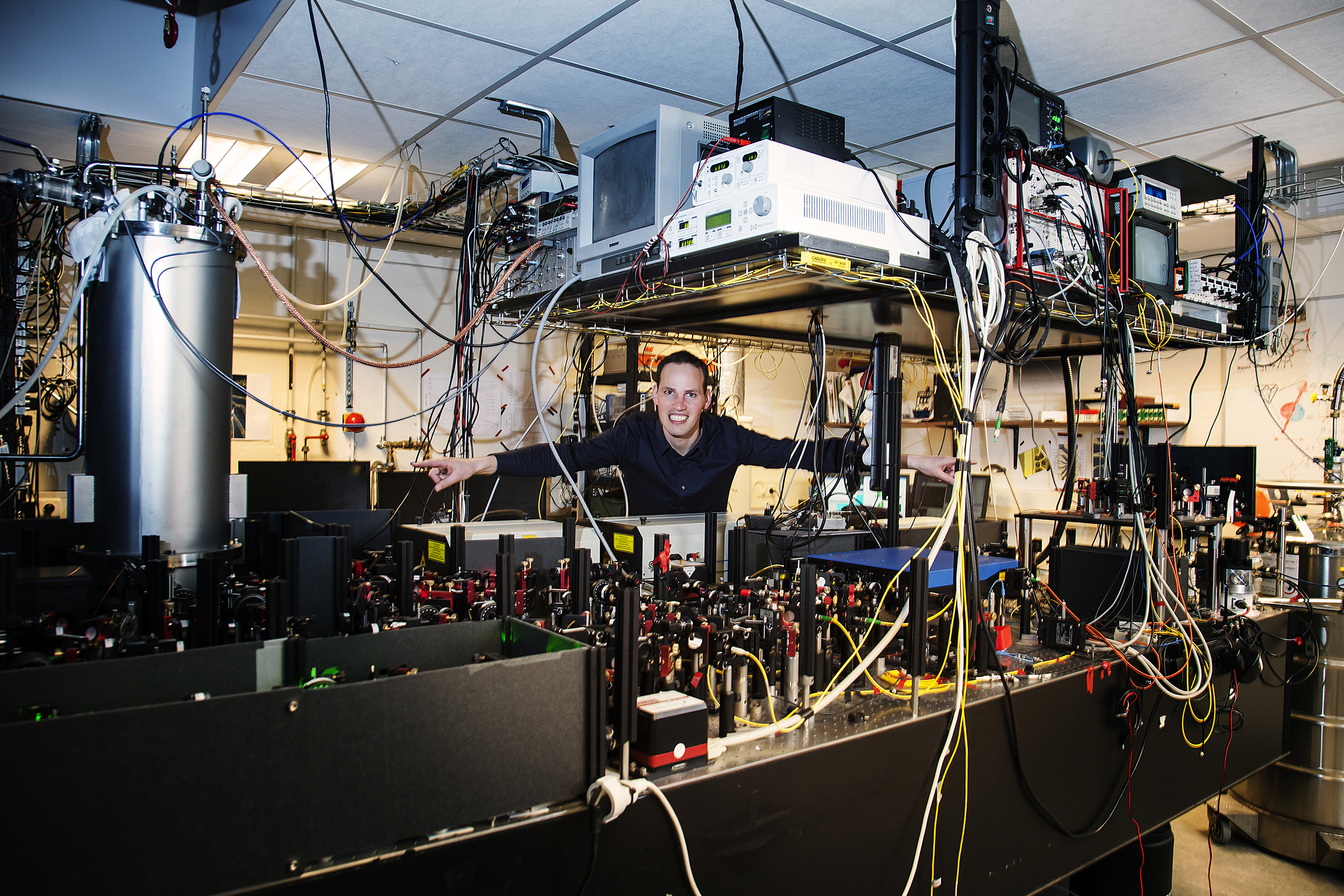By creating entanglement between quantum bits on distant chips, Prof. Ronald Hanson and his team have laid a basis for quantum information processing.
Drawing on Hanson’s latest work, the outlines of the long elusive quantum computer are beginning to emerge. The long-lived qubits are diamond-based and housed in cryostats. Their electron-spins can be set by microwave pulses and read out with fibre-coupled lasers. Laser pulses can even couple distant qubits in an entangled state, a unique quantum resource for information storage, processing and communication.
When two particles are entangled, their quantum states are coupled in a way physics cannot explain. Measure the state of one of the particles, and the state of the other is determined immediately. Entanglement of electron spins on different chips is a novelty.
Prof. Hanson (Quantum Transport Group at Applied Sciences) has previously demonstrated the stability on nitrogen-vacancy (NV) defect centres in diamond as well as the possibility of shielding these qubits with microwaves, the ability to read them out and the induction of entanglement of qubits on a single diamond chip. This week’s news is the macroscopic distance of three meters between entangled qubits. It’s the first time that entanglement between distant chip-based qubits has been produced and Hanson isn’t worried about the current success rate. What he sees is the future of quantum computing.
Hanson writes: ‘When combined with future advances in nanofabricated integrated optics and electronics, the use of electrons and photons as quantum links and nuclear spins for quantum processing and memory offers a compelling route forward towards the realization of solid-state quantum networks.’ And down that route he steadily goes, step by step.
www.delta.tudelft.nl/26620



Comments are closed.